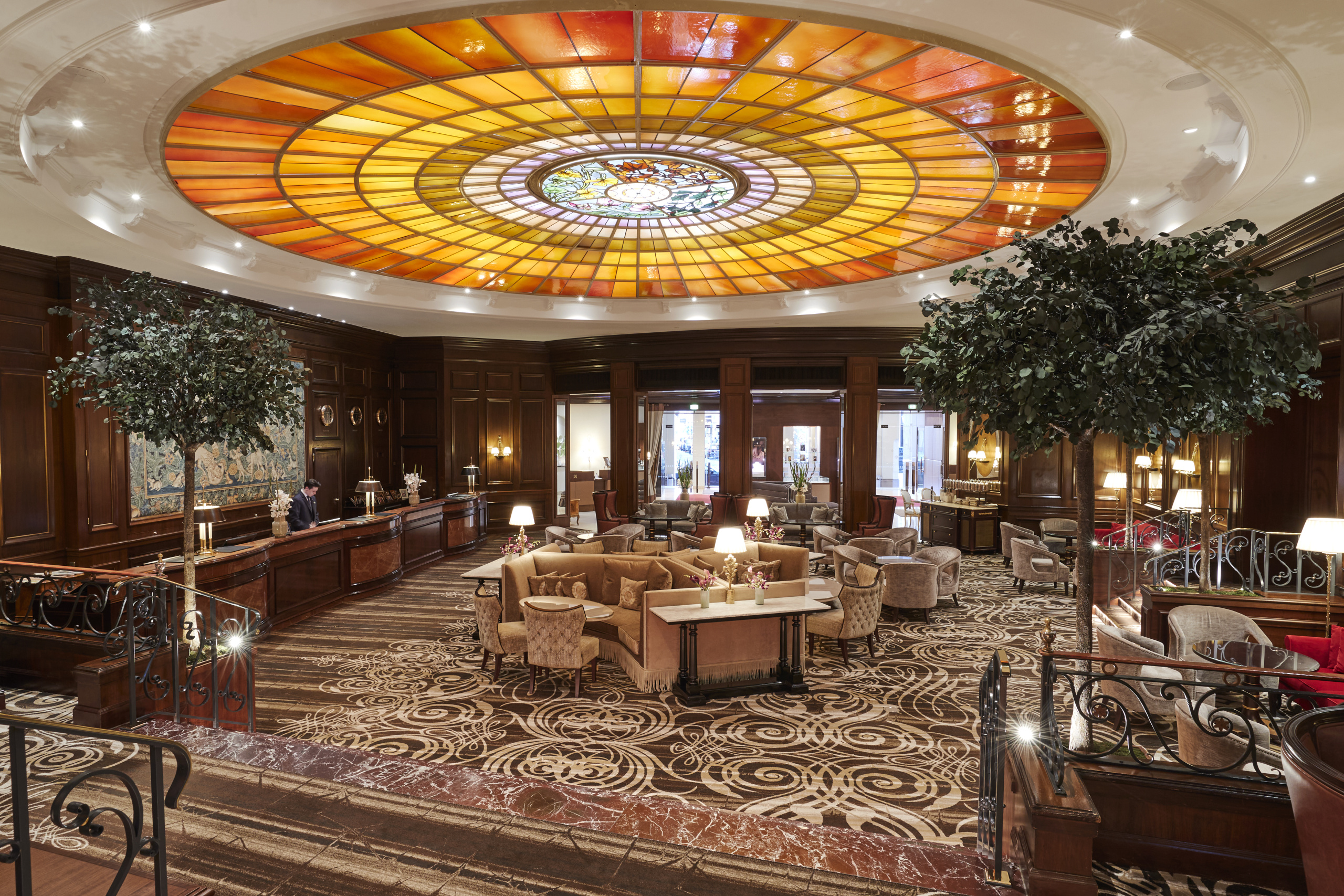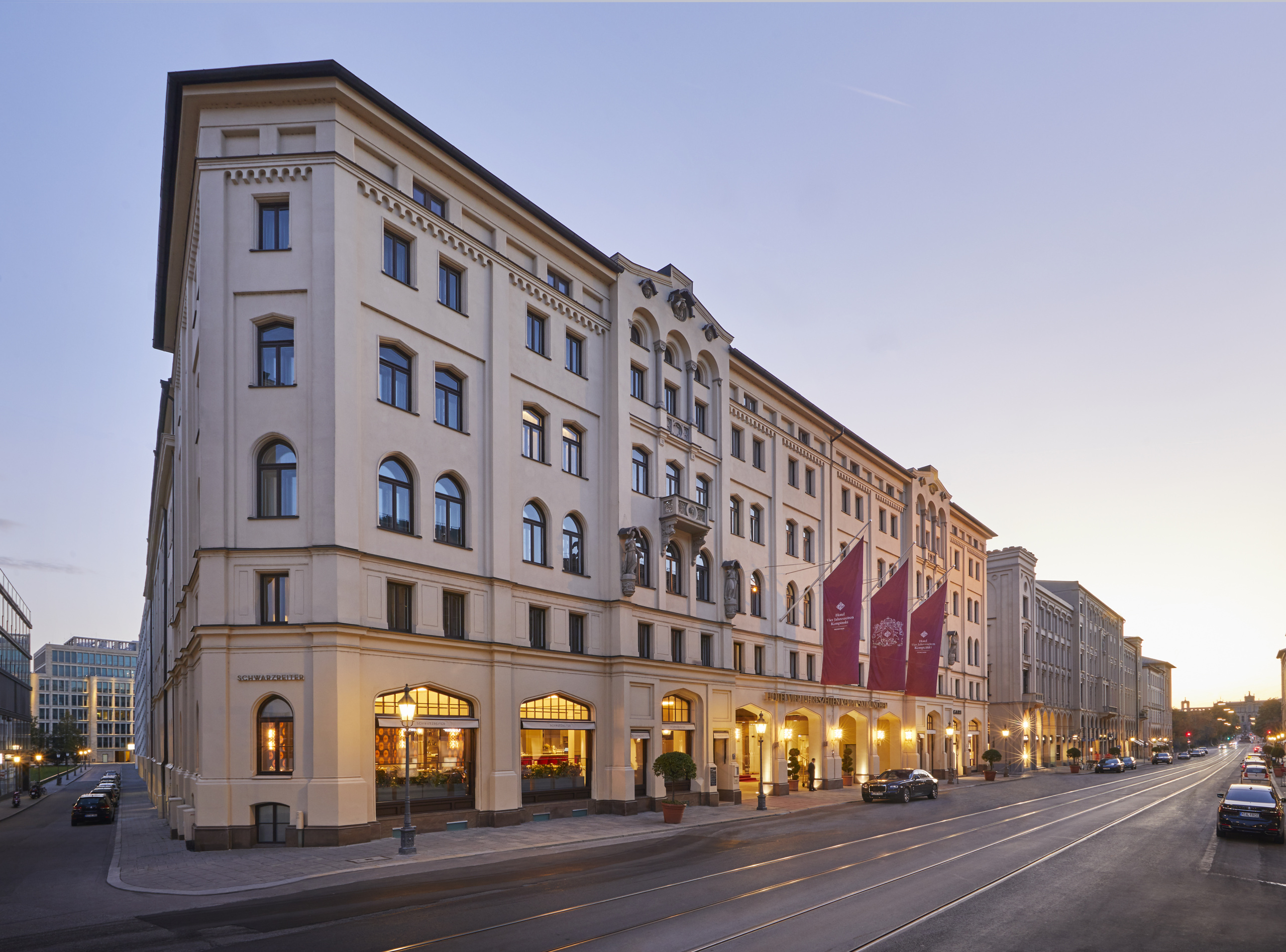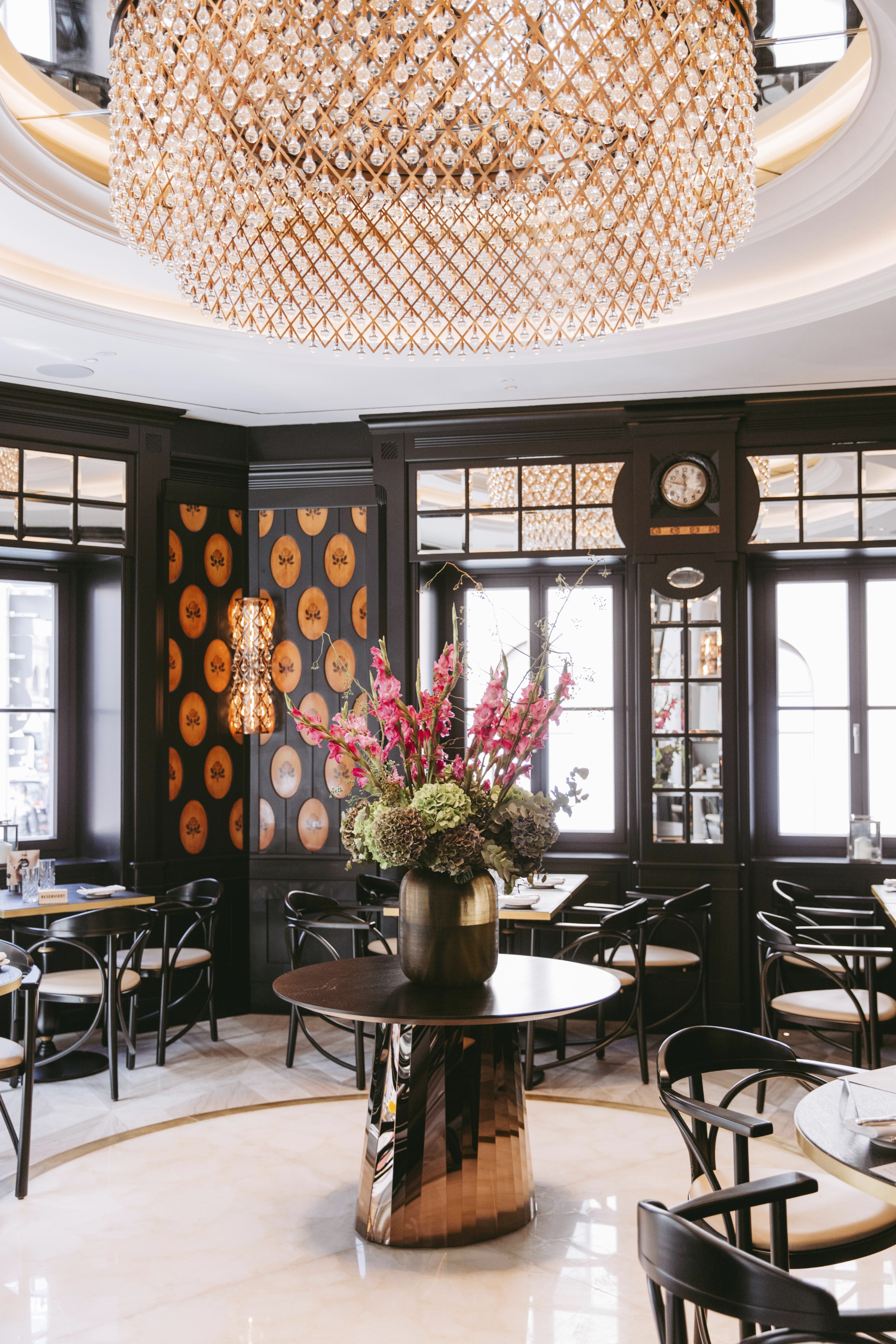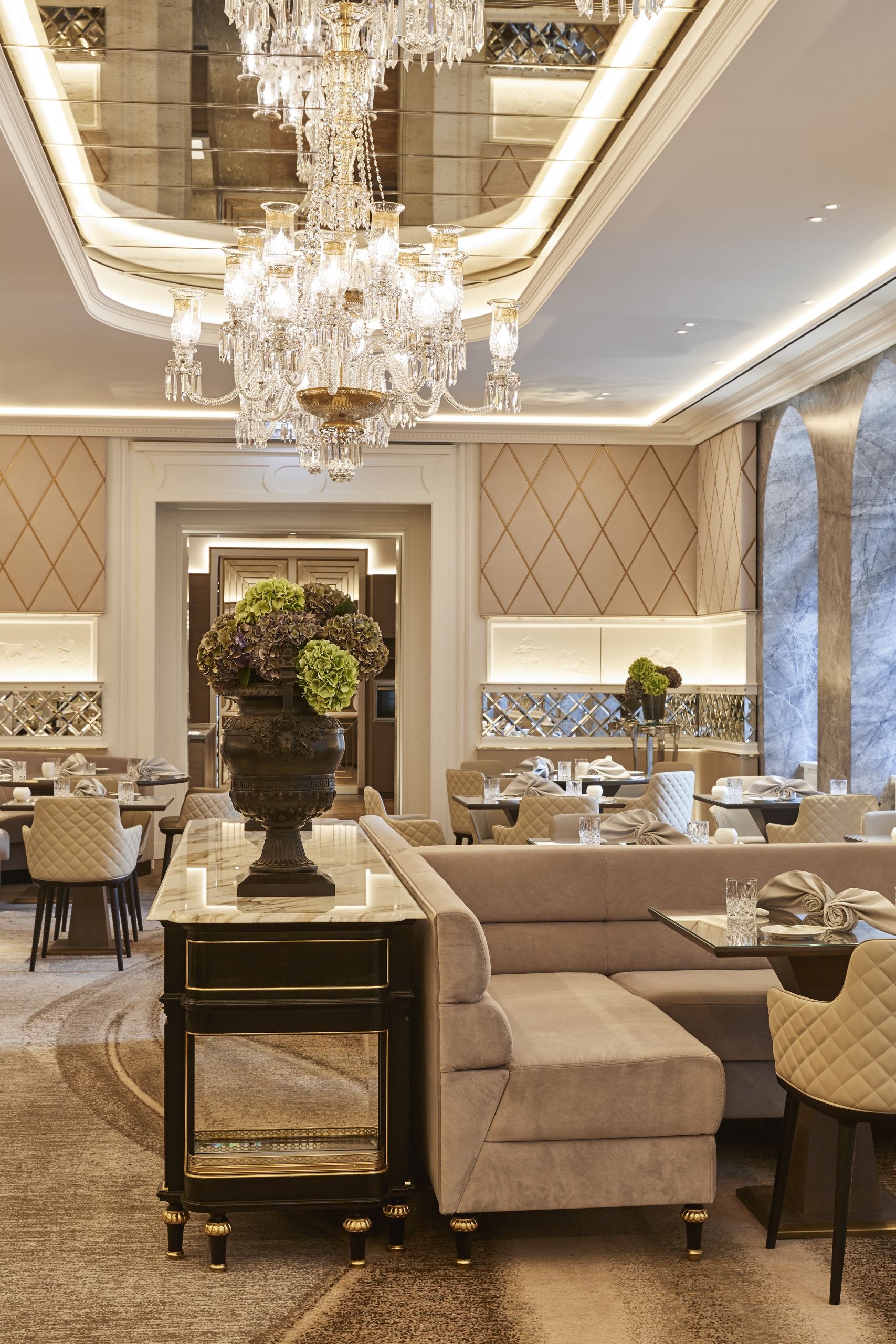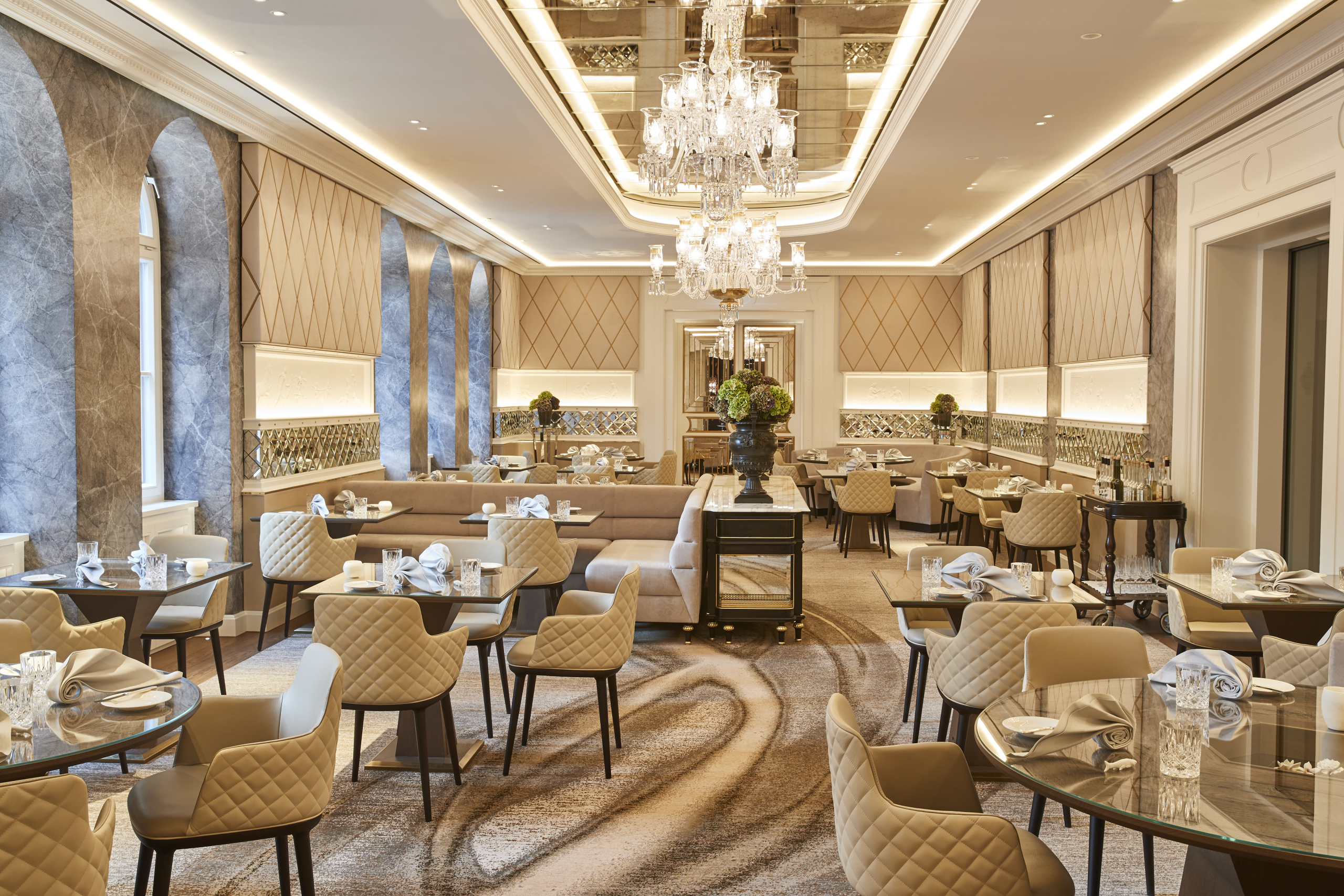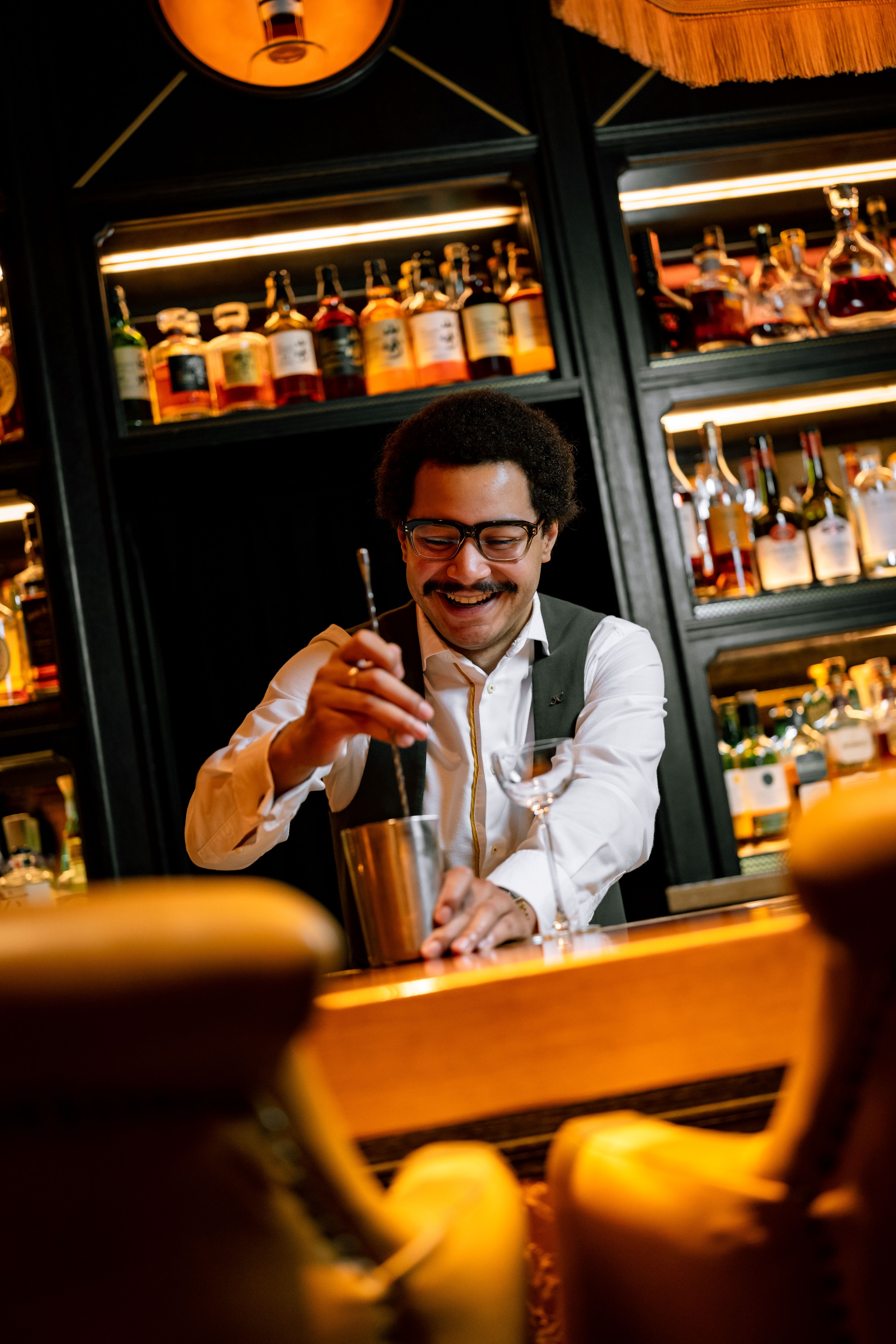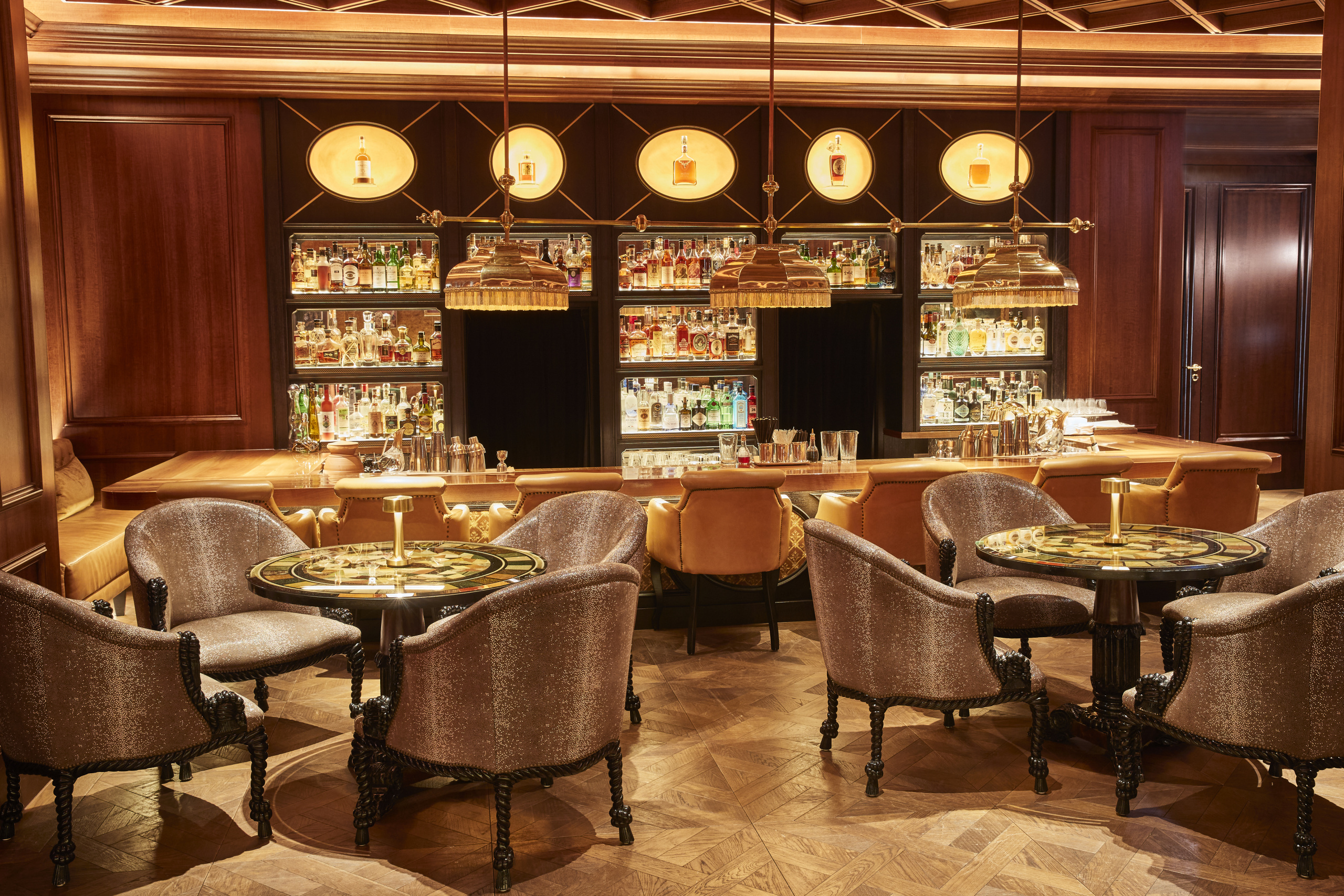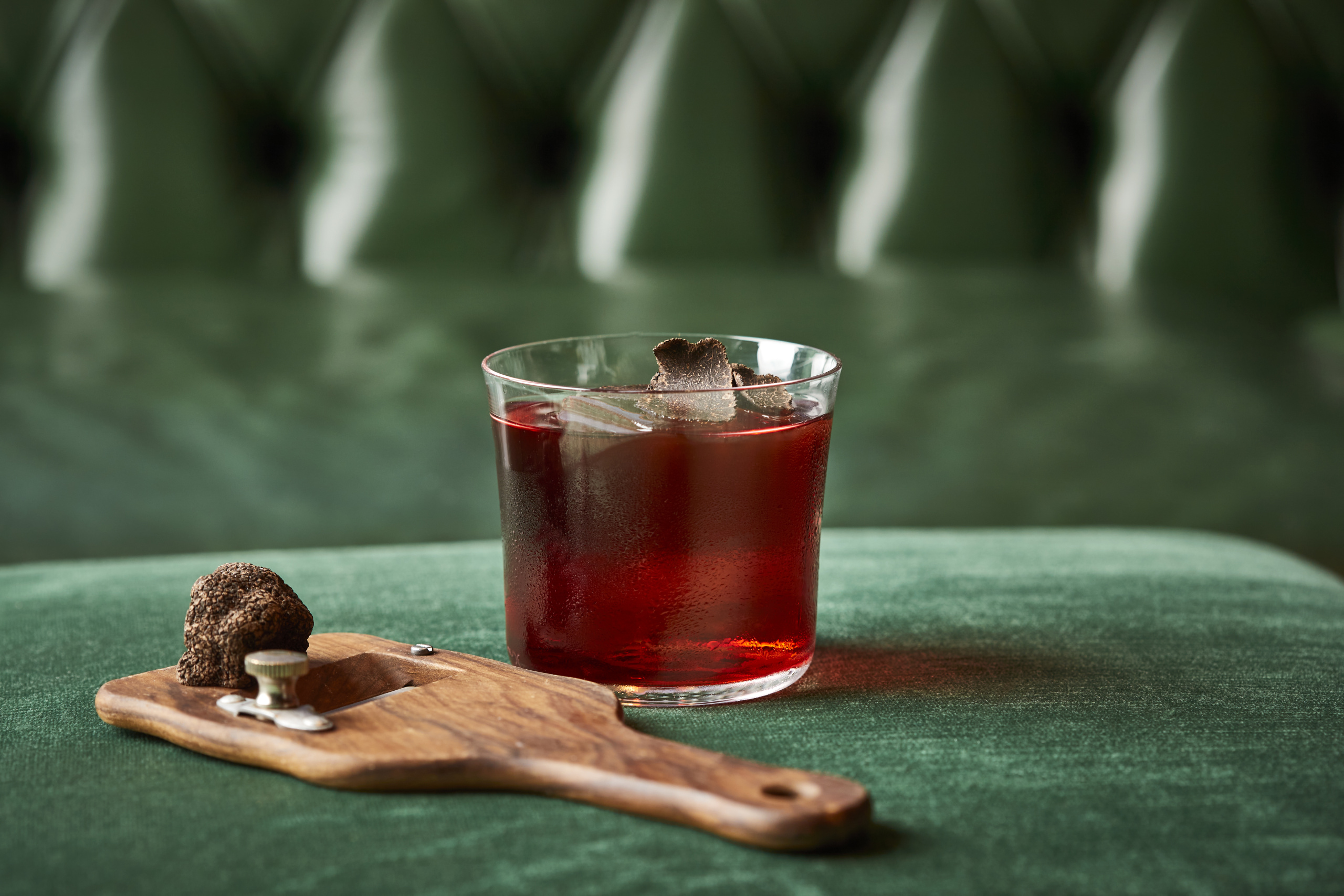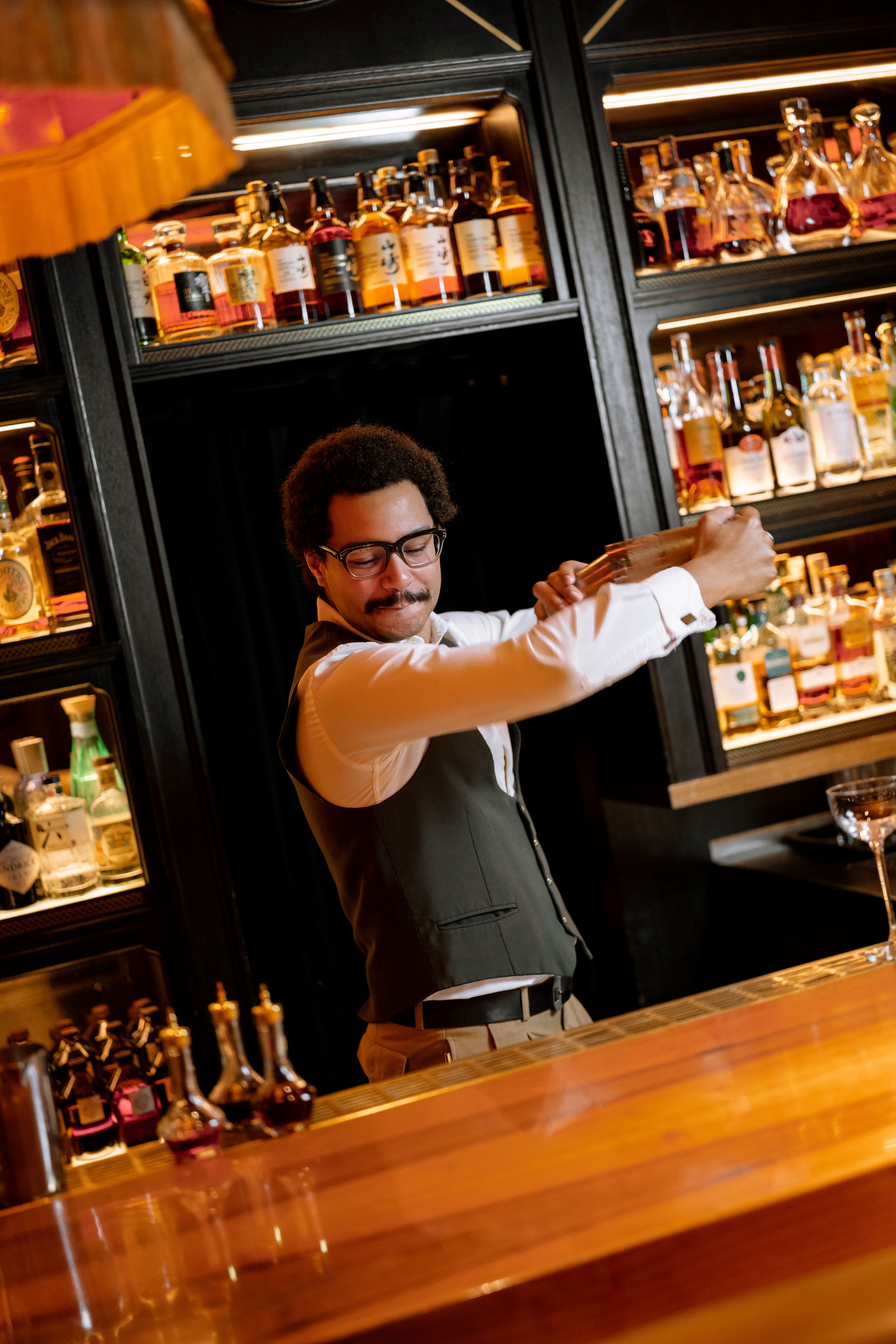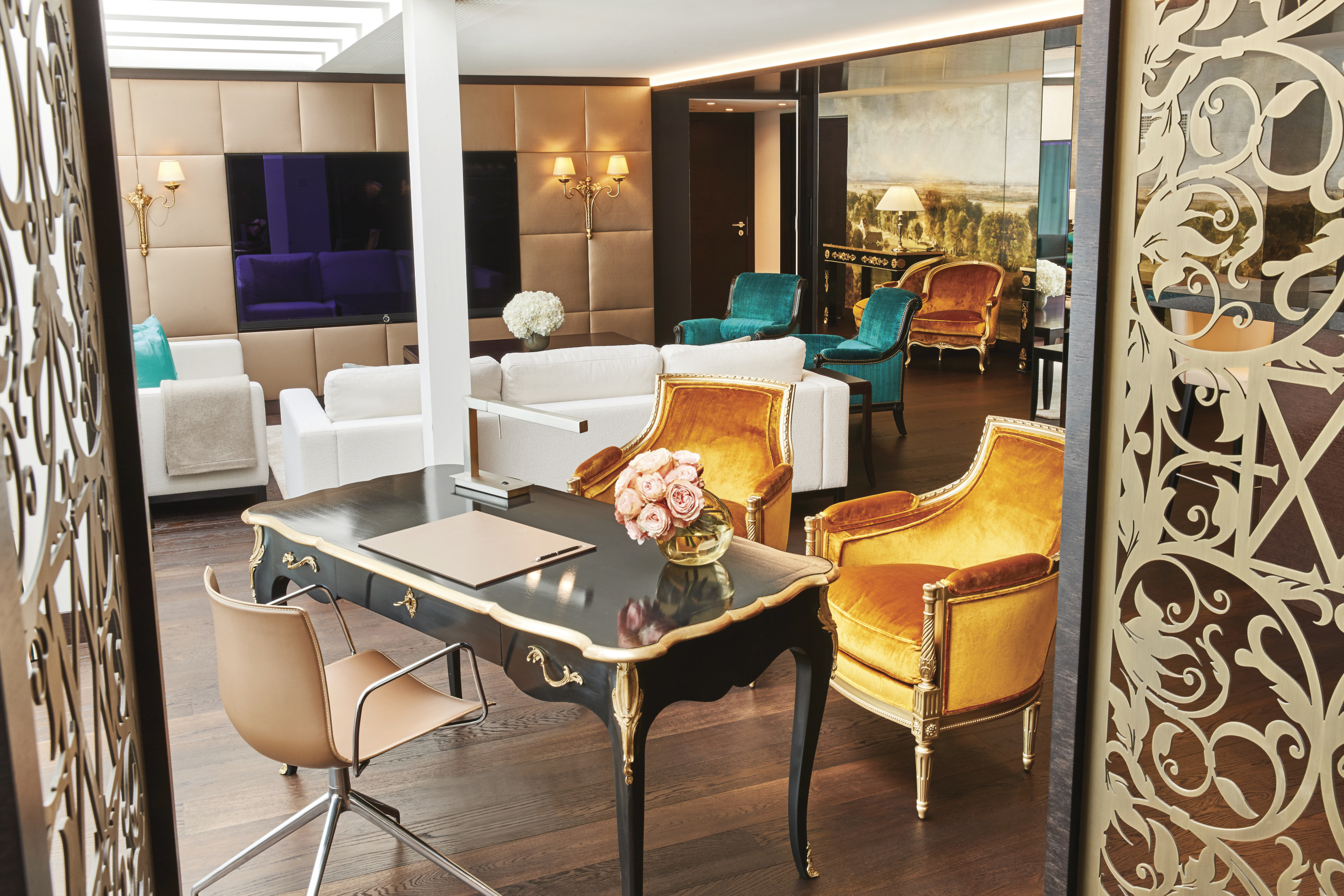
Munich: History in the Heart of Maximilianstrasse
What's New
Since 1858, guests have flocked to this glamorous hotel that was designed by a Bavarian monarch. Join travel writer Tim Johnson as he samples the best of Munich from the regal comfort of Hotel Vier Jahreszeiten Kempinski.
A stay on Munich’s royal avenue
Sitting at a table with a view here in Munich’s most beautiful living room, I believe King Maximilian II would have appreciated the scene before me.
Under the grand lobby rotunda, with its glowing stained-glass skylight, the social life of the city is flourishing. A happy din rises, from friends munching down delicious-looking club sandwiches and families sharing big, indulgent charcuterie boards, to smiling couples relishing in a sneaky afternoon glass of champagne. After all, the Bavarian monarch designed this place for both elegance and enjoyment, and it’s been delivering that since the hotel opened its doors way back in 1858.
KING MAXIMILIAN II’S VISION
Of course, King Maximilian II didn’t just build a hotel – he constructed a whole street. Taking a page out of his father, Ludwig’s, book, the ruler created a royal avenue in his name. A place to step out in style, and be seen. Home to both the state parliament and the National Theatre. Grand. Impressive. Regal.
Today, designer brands (Versace, Gucci, Louis Vuitton) line the leafy avenue, which is anchored by, in King Maximilian II’s words, “the most beautiful hotel in the city.” Deeming his own castle a little too small, the king commissioned the building that now houses Hotel Vier Jahreszeiten Kempinski to host his friends and visiting luminaries, and when it opened, it was indeed a wonder. The first in the city to remain open through all four seasons (thus, the name) it boasted steaming hot water and gas lights and other luxuries that were extremely rare at the time. It seems that Habsburg Empress Sisi particularly loved her baths here.
A TASTE OF MUNICH
And while the hotel has more recently hosted everyone from Queen Elizabeth II to Grace Kelly and Elton John, I felt very much at home here during my few days in house. Settling into my comfortable room, I walked the Maximilianstrasse, and sampled all that the hotel had to offer. Dinner here in the Jahreszeiten Lobby, and at the signature Schwarzreiter Tagesbar. A delicious meal: silky Bavarian steak tartare followed by a hearty plate of Wiener schnitzel.
Discover all Kempinski destinations in Germany.
Plus, drinks in the snug, somewhat speakeasy Jahreszeiten Bar, with resident mixologist Fabrice Tigoue. The space is all blonde woods and creamy banquettes and moody backlighting, creating a definite and distinct feel. Many nights, there’s a jazzy pianist plunking away on the keys.
As he stirs me a bourbon cocktail from their signature list, Fabrice affirms the hotel’s continuing influence on the city – and on him, personally. He notes that his parents made costumes for the national theatre, just around the corner, and the whole family would come here quite a lot for coffee and cake. Something that, he says, Muenchner and Muenchnerin routinely make a practice of doing, every couple months. “For the people who live here, this is the cornerstone of the city,” he says, pouring the dark, smooth cocktail into my glass.
ROYAL BAVARIAN FLAIR
Over the coming days, I wander around, soaking up the history. Famous scenes of Munich, hanging in the halls. Rooms whose designs were inspired by real castles across Bavaria. Late afternoons in a lounge chair, poolside, the waning sun slanting through huge floor-to-ceiling windows.
On my last day, back under the skylight in the living room, I chat with the Lady in Red, Julia Gsell, whose radiant smile seems to light up an already bright lobby. She notes that she’s passionate about her job, and that’s fuelled from a number of sources. Including the place itself.
“Daily inspiration does come from this house, the history, the surroundings,” she says, before considering her thoughts for a moment. “And the guests, too. Some of them really touch your soul.” I think that King Maximilian II, who built this beautiful place for friends and family and other visitors, would probably agree. And be proud.
